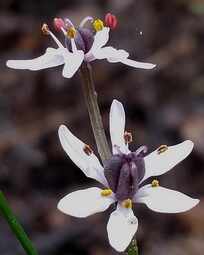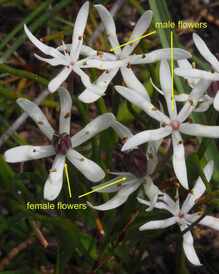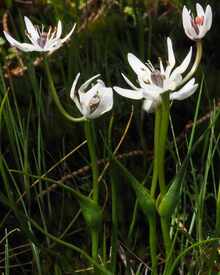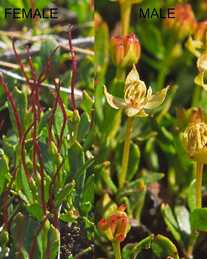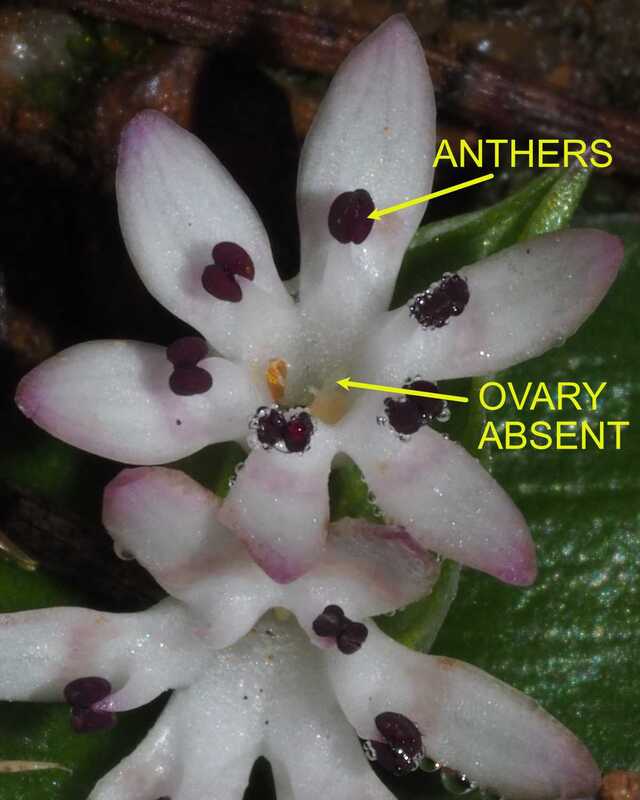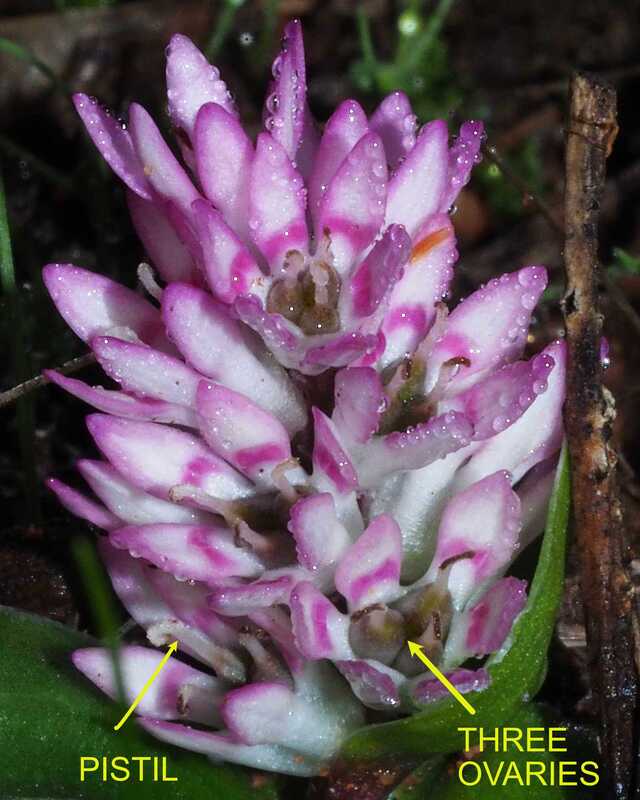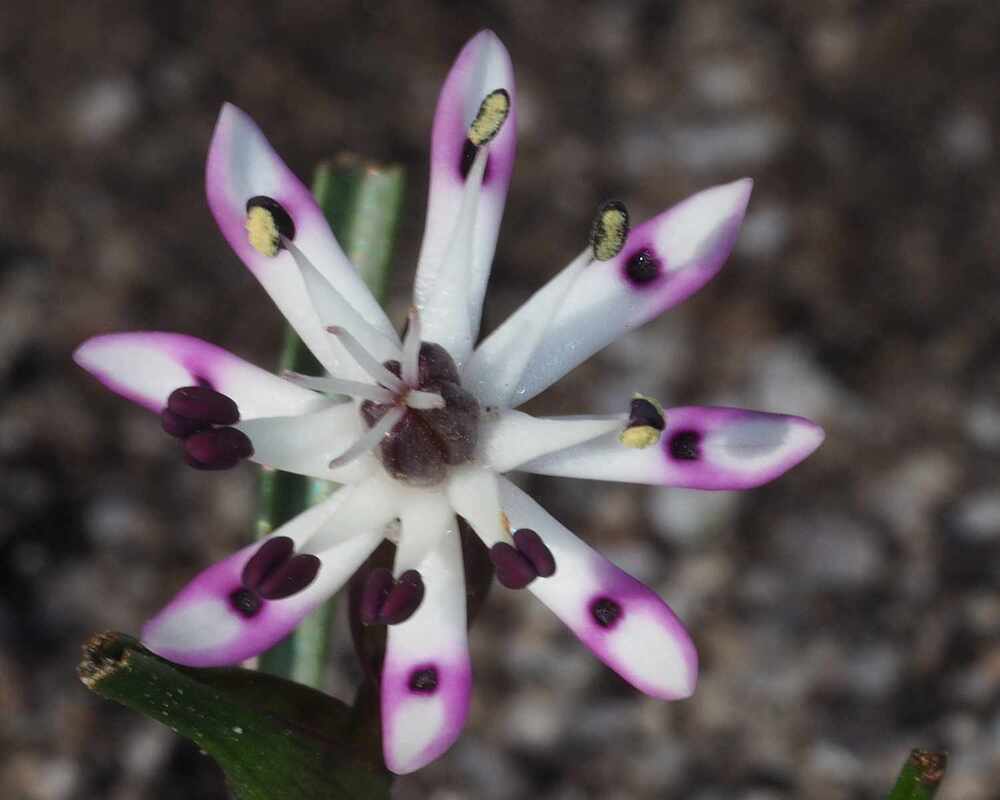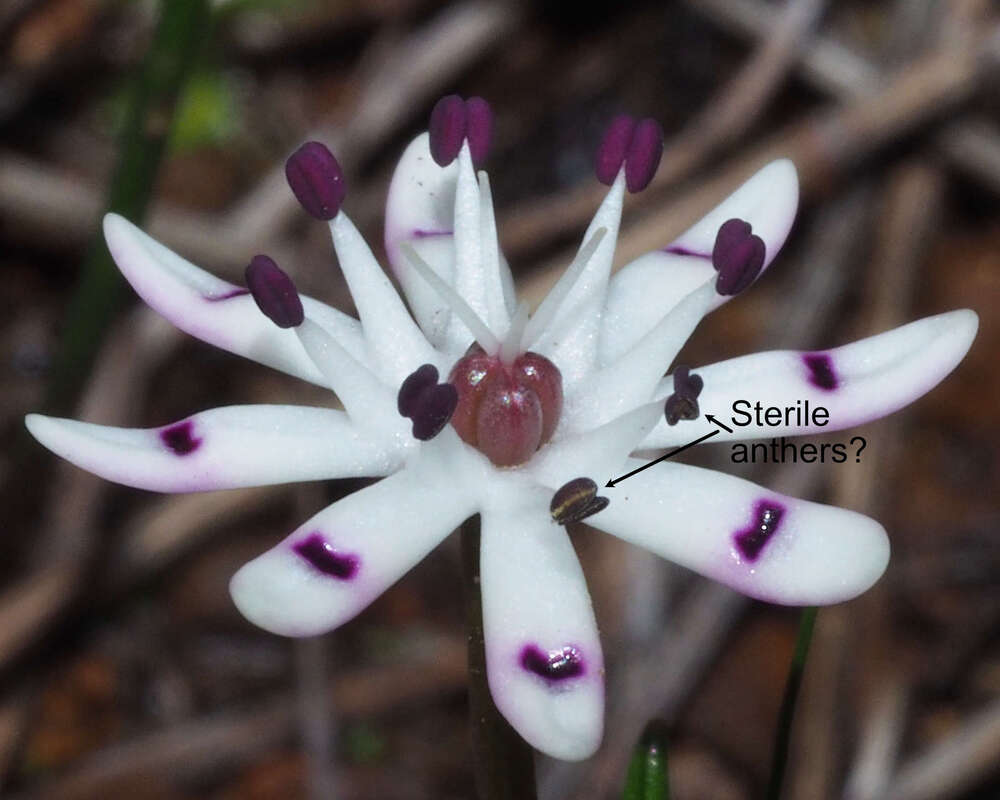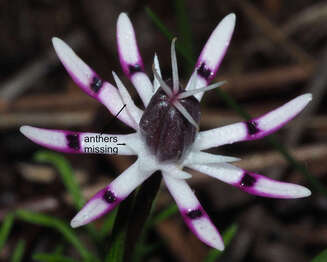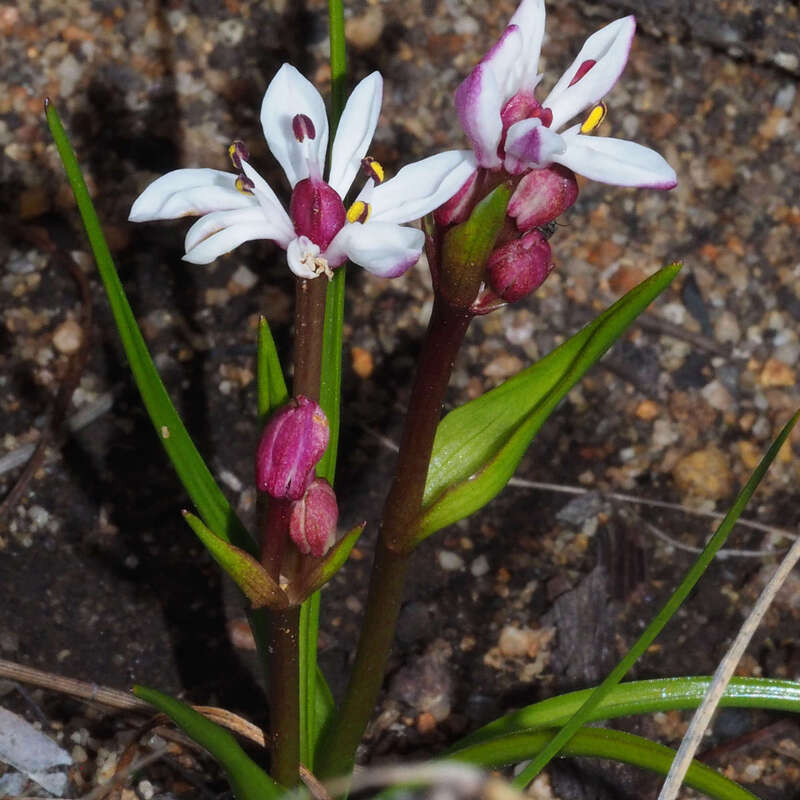Recently I was delighted to find a third Wurmbea lily in the Narrogin area, the delightful Wurmbea drummondii. Wurmbeas are associated with unrequited love, medicine, aromas and of course, sex. They flower in June-August.
Wurmbeas (common name ‘nancies’ are named a after a German aristocratic botanist named Friedrich von Wurmb (1742-1781). Friedrich and his brother fell in love with the same woman until he generously left, joined the Dutch East India Company in Indonesia and studied palms and orangutans. I wonder whether the woman’s name was Nancy, or she had any say in the matter?
The genus Wurmbea is in the family Colchicaceae (a folk remedy for rheumatism), which contains the alkaloid colchicine. Gout-riddled red wine drinkers rejoice. Before you graze, it has also been implicated in livestock deaths.
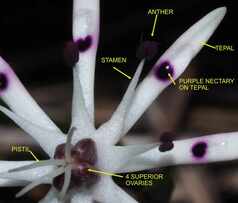 Wurmbea tenella flower
Wurmbea tenella flower I think that flies are main pollinators. Apparently some wurmbeas emit an odour to attract coprophagous (poo-loving) flies. However, I asked my sensitive sniffer wife to smell Wurmbea tenella flowers and she reported a sweet aroma.
Some species are plant world straight with normal flowers containing both male (anthers) and female (pistil and ovary) parts.
An example, Wurmbea sinora occurs uncommonly on gravelly soil in Foxes Lair.
Some species have male and female plants (dioecious).
Wurmbea dioica is very variable the example below has male and female flowers on the same plant (monoecious).
Beautiful but uncommon dioecious Wurmbea drummondii occurs on redder soils like gravelly loams on the Highbury and Three Mesas walks.
Andromonoecious plants are those, which have normal flowers as well as male flowers on youngest growth. Apparently, this occurs rarely in Wurmbea drummondii. Note that flowers tend to become redder with age.
